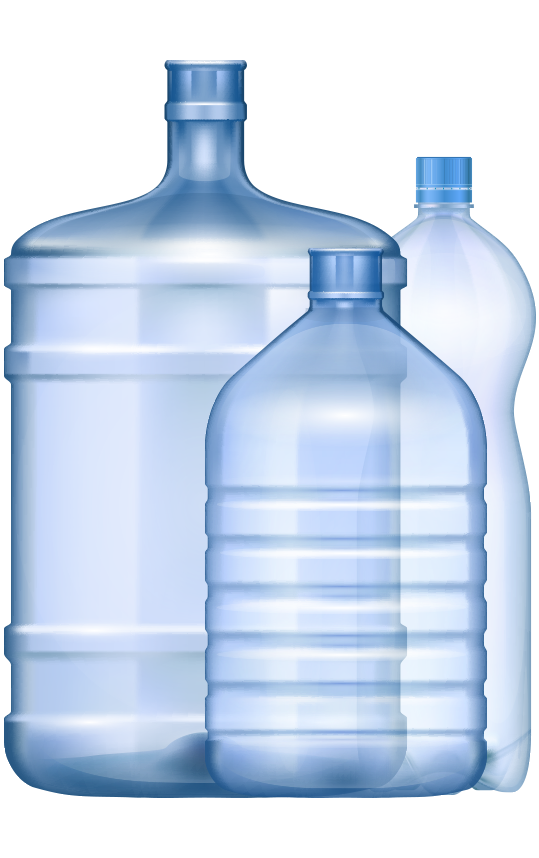
Source water
Unlike mineral waters, spring waters are subject to the same regulations as tap water, i.e. they must meet all the drinking water criteria. On the other hand, like mineral waters, spring waters must not undergo disinfection treatments. Their composition may vary over time. When you get into the habit of buying spring water for its composition, it is therefore important to check your label from time to time. From one name to another and even from one bottle to another, the mineral content of spring water can also vary significantly. The same name for spring water can indeed come from several sources located in different regions, and its composition obviously changes according to the origin. But in store, the bottles have the same name, so check the source name and detail the label to identify differences.
Source Water
Unlike mineral waters, spring waters are subject to the same regulations as tap water, i.e. they must meet all the drinking water criteria. On the other hand, like mineral waters, spring waters must not undergo disinfection treatments. Their composition may vary over time. When you get into the habit of buying spring water for its composition, it is therefore important to check your label from time to time. From one name to another and even from one bottle to another, the mineral content of spring water can also vary significantly. The same name for spring water can indeed come from several sources located in different regions, and its composition obviously changes according to the origin. But in store, the bottles have the same name, so check the source name and detail the label to identify differences.

in the folder jugs
The bottled water market is declining, while tap water is still mistrusted. So there was a place to take, and it is the filter jugs that occupy it. From 200,000 units sold in 2000, the number one in the sector has grown to 1,250,000 decanters sold 10 years later. Is this success of the filter jugs justified? To make an objective decision, Que Choisir carried out two laboratory tests a few years ago. The first concerned new jugs bought in stores, the second concerned tap water and filtered water from 31 volunteer families living in different regions. If the new decanters partly meet their promises, even if they have some weaknesses, in the homes of decanter users who have had their water tested, it is catastrophic. Of the 31 analyses, there is not one to save the water filtration process! While most of these dwellings receive drinking tap water, the filtered water is degraded.
Protecting drinking water abstractions is now a priority of water policy.
But it is at the cost of costly treatments, abandoning nitrate- and pesticide-contaminated catchments, and interconnecting networks to lower pollutant levels. A race forward that is reflected in consumers' water bills. "More and more drinking water services must equip themselves with treatment units for nitrates and phytosanitary products to continue to deliver water that meets drinking water standards," confirms the Ministry of Ecology. Because the water quality of rivers and groundwater remains very degraded…

Help farmers change their habits
All studies show, however, that preventive solutions, in other words the fight against agricultural pollution, are less costly than curative water treatment solutions. The Court of Auditors did the calculation in 2010. Cleaning up water costs 2.5 times more than helping farmers avoid pollution. Since then, the Seine-Normandy water agency has carried out the expertise on 21 catchments spread over its territory. As a result, preventive measures are always less expensive. From 2 to 87 times less than the curative, depending on the municipalities studied. Logically, with such financial stakes, the protection of water resources should be an absolute priority. Especially since the requirement to protect abstractions, the areas where drinking water is withdrawn, is not new. It was enshrined in law in 1964, fifty years ago! Faced with the growing impact of agricultural pollution, the 1992 water law reaffirmed it, with no further results. Instead of fighting pollution, we closed the catchments that were too loaded with nitrates or pesticides, i.e. 5,000 in 10 years! That wasn't enough. In 2008, the Grenelle de l'environnement listed 507 of them for protection within four years. Since then, the six water agencies that share the territory have published their inventory. The number of highly degraded catchments has increased to more than 2,500. The Seine-Normandy basin alone has 1,700 of them.
Help farmers change their habits
All studies show, however, that preventive solutions, in other words the fight against agricultural pollution, are less costly than curative water treatment solutions. The Court of Auditors did the calculation in 2010. Cleaning up water costs 2.5 times more than helping farmers avoid pollution. Since then, the Seine-Normandy water agency has carried out the expertise on 21 catchments spread over its territory. As a result, preventive measures are always less expensive. From 2 to 87 times less than the curative, depending on the municipalities studied. Logically, with such financial stakes, the protection of water resources should be an absolute priority. Especially since the requirement to protect abstractions, the areas where drinking water is withdrawn, is not new. It was enshrined in law in 1964, fifty years ago! Faced with the growing impact of agricultural pollution, the 1992 water law reaffirmed it, with no further results. Instead of fighting pollution, we closed the catchments that were too loaded with nitrates or pesticides, i.e. 5,000 in 10 years! That wasn't enough. In 2008, the Grenelle de l'environnement listed 507 of them for protection within four years. Since then, the six water agencies that share the territory have published their inventory. The number of highly degraded catchments has increased to more than 2,500. The Seine-Normandy basin alone has 1,700 of them.
solutions
However, there is no fatality in this disastrous record! The causes and solutions are known. These are agricultural practices and land use. "The first measures to be put in place to improve water quality in catchments are actions to reduce pollution, such as reducing the use of fertilizers and plant protection products, changing the cropping system, and switching to organic farming, which avoids the use of phytos. There is also reforestation or the establishment of grasslands in the most sensitive areas, explains Claire Billy, a specialist in diffuse pollution at Onema (Office national de l'eau et des milieux aquatiques). The other lever is complementary. It focuses on reducing the transfer of pollutants through the introduction of nitrate-trapping intermediate crops and buffer zones, including grassy strips along watercourses. But to establish an action plan on a catchment area, technical solutions are crossed with their local economic acceptability. Everyone must find their way around to take the plunge. »
The challenge is far from over: the Common Agricultural Policy (CAP) provides a much greater incentive to race for yields than to protect catchments, and the amounts paid to farmers are disproportionate. For example, we arrive at about 1.6 billion euros of direct aid per year under the CAP in Seine-Normandy, compared to 35 million euros for the protection of water resources, a ratio of 1 to 43! Last year, the Seine-Normandy Water Agency spent only 60% of its budget on measures to protect catchments and control diffuse pollution. "The problem," says Sylvain Victor, head of the agency's water resources and agriculture department, "is that our action and aid sometimes go against the financial incentives of the CAP, while the protection of the catchment feeding area requires less chemical agriculture such as organic farming. We are clearly in a conflict of use between the protection of the resource for drinking water supply and intensive agriculture. "He adds: "Our intensive agro-industrial system is coherent but not adapted to the protection of water resources in the catchment areas. The agency supports the actions to be carried out and finances them, but prevention remains the initiative of the municipality, the water union. We only intervene if there is a willingness to act locally. »